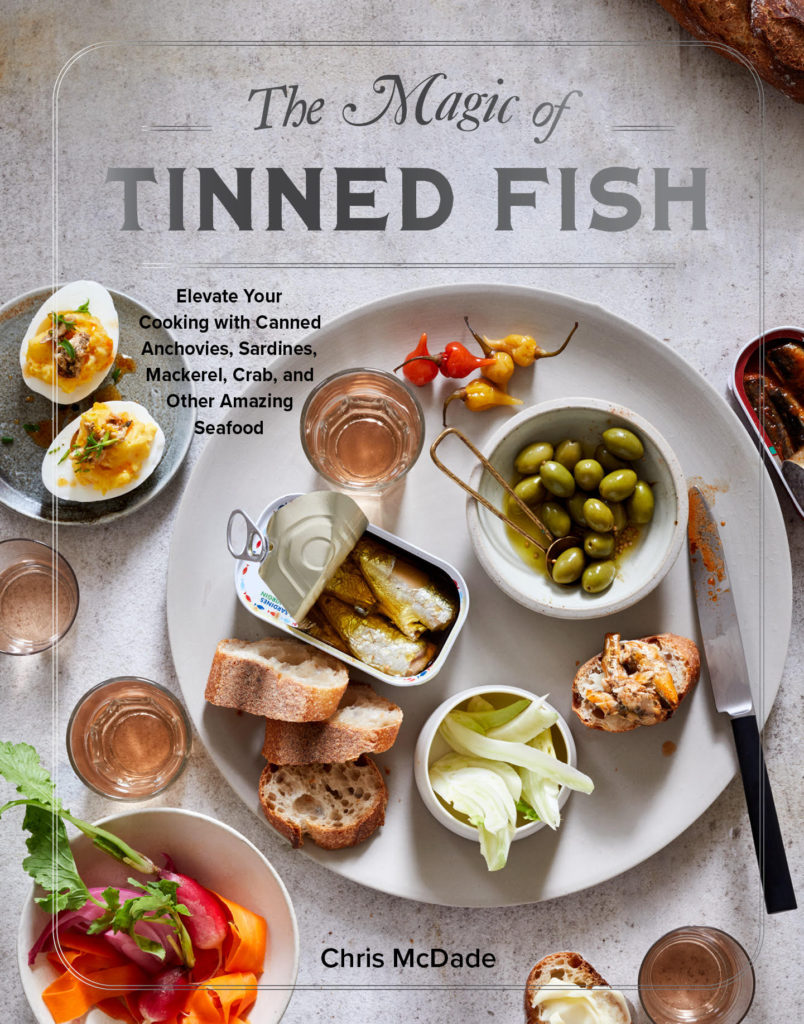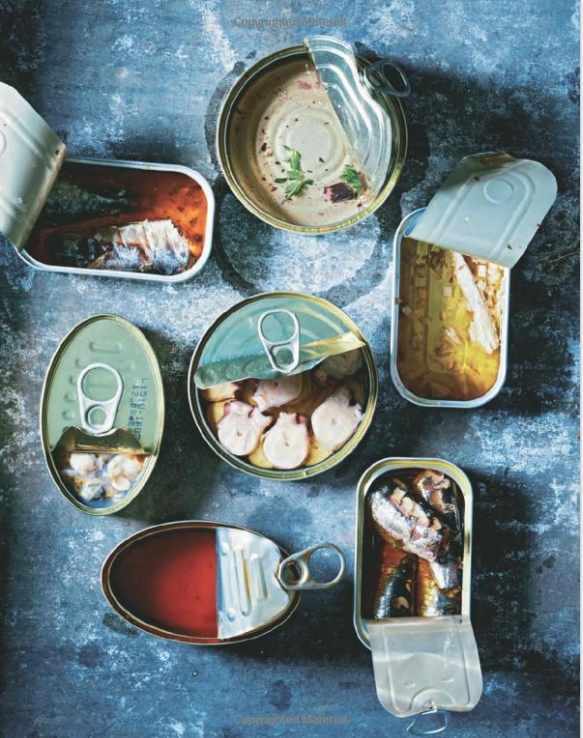While fresh fish is great, and frozen is usually fine, there’s a whole wide world of tinned fish that can make great meals. So open up this book.
Most of us eat tinned tuna and tinned sardines but don’t give much thought to the other tins on the shelves – anchovies, mackerel, crab, mussels, octopus, trout and even oysters and sea urchin.
Chris McDade has a restaurant, Popina, in New York and is a big fan of tinned fish, especially tinned anchovies as a secret flavour ingredient – don’t save them for pizzas.

When freezers became popular, tinned goods lost market share and understandably so in some cases – tinned peas or sweetcorn can never beat the taste of frozen, for example.
Tins though do have great practical advantages – the main one is that you don’t need to use electricity to store them, the food is preserved at peak quality, and tinned food can last for years in the cupboard, ready to make a meal at any time.
And of course tin can be recycled, or left to harmlessly biodegrade, unlike plastic packaging
Tins, as he points out, have not been around all that long, they came about via a competition by the French army to find a way to provide front line soldiers with easily carried food and as a result in 1810 the first ‘canned’ food was born.
Quality matters
Look for fish canned in oil, not water is Chris’s advice as well as ‘you get what you pay for’ so don’t skimp, and do look at how the fish inside were caught – hook and line being the best for sustainability.
And brands matter, too. We’ve probably all seen the cheerful red and yellow tins of the brand Ortiz, one of the oldest and best brands from Bilbao, Spain. Good and not that expensive.
He recommends we look out too for Matiz as well, a Galician high quality brand as well as Ramon Pena for their mussels and octopus.
And for the best anchovies, Don Bocarte from Cantabria are a bit pricey (£17.50 for a 100g tin!) but oh so worth it.
Nearly all of these can be usually sourced online from specialist suppliers,
Mackerel ‘tins’ well and is a great source of Omega -3s and vitamin K. Eating tinned mackerel instead of tinned tuna also takes pressure off the beleaguered tuna stocks. Try a tinned mackerel and poached egg on toast, or a mackerel, green bean and tomato salad with chorizo vinaigrette.

So what does Chris suggest you do with all this tinned terrificness? Well there are twelve anchovy recipes, including an anchovy, parsley and pecorino sandwich, a rib eye steak with anchovy butter and a classic spaghetti with puttanesca sauce.
Moving up in size we have sardines – not sardines in tomato sauce of course but tinned sardines simply in oil. Make a Sicilian spaghetti con le sarde with sardines, anchovies, raisins and pine nuts.
What about beer-battered sardines with harissa? Or a sardine, bean and chicory soup? Or just tip them out onto a board and go find some crusty bread. Yum.
Tinned clams? Why not. They make a great clam dip as well as a top-tasting spaghetti with white wine and chili flakes. Or crab, squid and even sea urchin. The seventy five recipes here are all very tempting.
The text is in American but that doesn’t really cause any problems and while he only lists US suppliers, a moment’s Googling will find you all you need.
This is a book that will change the way you view tinned fish and how you cook with it.
Chris is on Instagram @alwaysanchovy
Published by Artisan £18.99 hardback June 2021
- ISBN-10 : 1579659373
- ISBN-13 : 978-1579659370
Try these cookbooks too!
